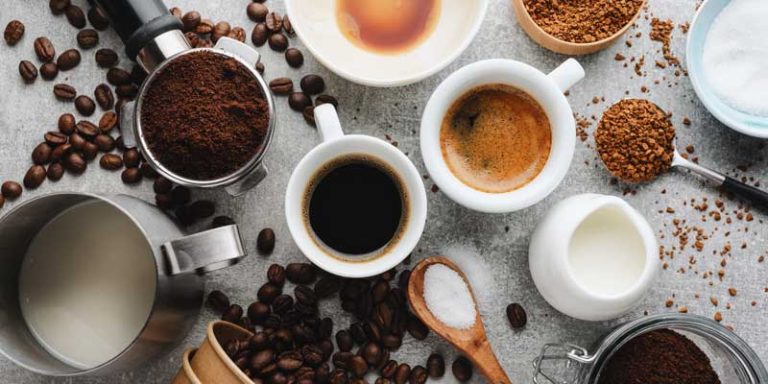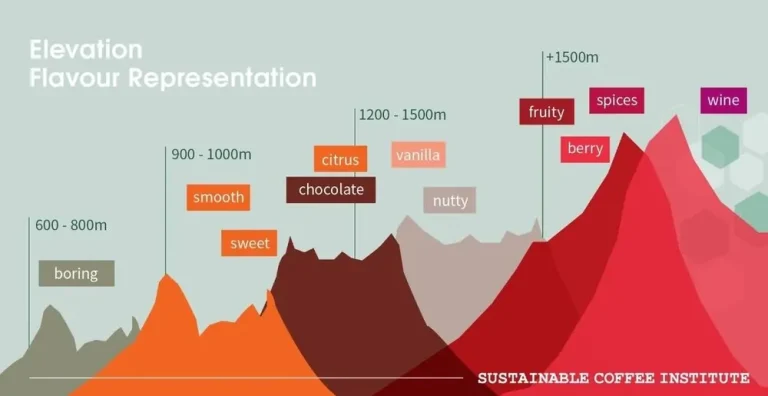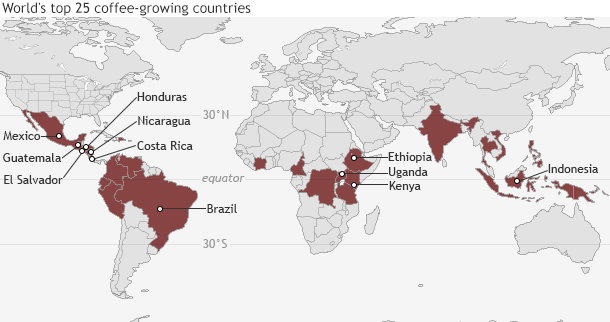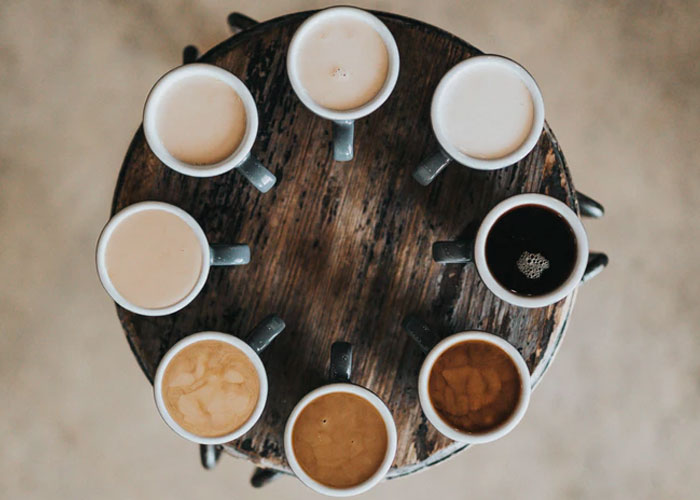Are you a coffee lover looking to take your passion to the next level?
Home roasting might be the perfect hobby for you!
In this beginner’s guide to home roasting, we will cover everything you need to know to get started.
From understanding the basics and essential equipment needed, to choosing the right coffee beans and exploring different roasting methods, we’ve got you covered.
Get ready to perfect your home roast with our tips and tricks, and dive into the world of crafting the perfect bean.
Key Takeaways:
- Understand the basics of home roasting and the essential equipment needed to get started.
- Choose the right coffee beans and experiment with different methods like stovetop, oven, popcorn machine, and home coffee roaster roasting.
- Perfect your home roast by managing time and temperature, monitoring progress, and experimenting with different roast levels and flavor profiles.
Introduction to Home Roasting
Embark on a journey into the world of home roasting, where coffee enthusiasts delve into the art of transforming green coffee beans into a rich, aromatic delight within the comfort of their homes.
Home roasting opens up a realm of possibilities for customizing the flavor profiles based on personal preferences. One of the key stages in the roasting process is the first crack, signaling the release of moisture and expansion of the beans. This moment is pivotal as it marks the transition from light to medium roast. Coffee aficionados experiment with various methods such as air roasters, stove-top popcorn makers, or dedicated home roasting machines to achieve different levels of roasts, ranging from light to dark, each offering distinctive taste notes.
Understanding the Basics
To master the art of home roasting, it is essential to grasp the fundamental concepts of roast profiles, chaff removal, and the intricacies of achieving different roast levels in the roasting process.
Understanding roast profiles involves knowing the Maillard reaction, which is vital for developing flavors during roasting. The removal of chaff, the papery skin on coffee beans, is crucial as it can affect the taste and aroma of the final brew. Achieving various roast levels, from light to dark, requires precise monitoring of temperature and time to reach the desired flavor balance. As the beans undergo the second crack, aromatic oils begin to surface, signaling a darker roast with a bolder taste profile.
Getting Started with Home Roasting
Embarking on the home roasting journey begins with selecting high-quality green coffee beans and acquiring a suitable roaster to unlock the full potential of fresh flavors and enticing aromas in every batch.
When starting your journey of home roasting, the selection of quality green coffee beans is crucial as it forms the foundation for the flavor profile. Opting for beans from reputable sources ensures a higher chance of a successful roast. Equally important is the choice of roaster, be it an air roaster, drum roaster, or stovetop method. Each has its unique way of influencing the roasting process and the final product. Remember, the freshness of the beans also plays a pivotal role in determining the depth of flavors and aromas that will emerge after roasting.
Essential Equipment for Home Roasting
The cornerstone of successful home roasting lies in the selection of essential equipment, including a reliable roasting machine that caters to the unique needs of home enthusiasts seeking to perfect their craft.
Aside from roasting machines, the choice of an air roaster can significantly impact the control and consistency of your roasts. Air roasters utilize hot air to roast coffee beans evenly, offering more control over the roasting process. Thermometers and timers are critical tools for monitoring temperature and time, ensuring precise roasting results. It’s also essential to consider the batch size capacity of these machines, as it determines the quantity of beans you can roast at once, influencing the efficiency and convenience of your home roasting setup.
Choosing the Right Coffee Beans
Selecting the perfect coffee beans for home roasting is a pivotal decision that shapes the flavor profile and aromatic experience of the final brew, offering enthusiasts a tantalizing journey through a spectrum of taste sensations.
When considering which beans to roast at home, one essential aspect to contemplate is the flavor preferences that you and others may have. Some individuals prefer a bold, dark roast with rich, chocolaty undertones, while others lean towards a lighter roast that accentuates fruity or floral notes. Understanding the flavor profiles you enjoy can guide your selection process.
Delving into the various origins of coffee beans is crucial. Different regions around the world produce beans with distinct characteristics; for instance, beans from Ethiopia might exhibit floral and citrus notes, while beans from Colombia could offer a balanced acidity and caramel sweetness.
Methods of Home Roasting
Exploring the diverse methods of home roasting unveils a world of possibilities, from utilizing a popcorn machine to creating a designated roasting space that provides meticulous control over the roasting process.
In terms of unconventional methods like utilizing a popcorn machine for roasting, enthusiasts have found an inventive way to harness the heat and airflow mechanisms, resulting in unique flavor profiles.
Opting for a designated roasting space allows for better organization and cleanliness in handling the roasting process. By focusing on enhancing control over variables such as temperature and time, home roasters can experiment with different beans and achieve a customized roast that suits their preferences.
Stovetop Roasting
Stovetop roasting offers a traditional and hands-on approach to home roasting, where enthusiasts can fine-tune the roast using direct heat, ensuring cleanliness and learning from potential mistakes along the way.
One key aspect of stovetop roasting is the precise control of heat, as this directly impacts the flavor and aroma of the final brew. Maintaining cleanliness is critical to prevent any residual flavors from previous roasts affecting the current batch. Besides this, being aware of common distractions and variables – such as sudden temperature changes or uneven heating – allows for adjustments to be made swiftly. Embracing mistakes as part of the learning process fosters improvement and experimentation, leading to a deeper understanding of the roasting craft.
Oven Roasting
Oven roasting presents a versatile method for home enthusiasts, allowing them to experiment with different roasting methods, observe roasting patterns, and document their findings to refine their craft.
One of the key capabilities of oven roasting is its predictability – understanding how different factors such as temperature, time, and seasoning choices impact the final product. By observing these patterns and making note of the subtle nuances in each roast, individuals can enhance their ability to predict outcomes and tweak variables for desired results.
The act of documenting each roasting session is an essential part of the process. Whether through detailed notes, photographs, or a roasting journal, keeping track of the nuances and adjustments made during each roast allows for a more structured approach to refining techniques over time.
Popcorn Machine Roasting
Utilizing a popcorn machine for home roasting introduces enthusiasts to a quirky yet effective method that provides precise control over the roasting process, transforming green coffee beans into delightful brews.
This unconventional approach offers a plethora of benefits. One of the key advantages is the significantly smaller roasting space required compared to traditional coffee roasters. This makes it an attractive option for those with limited kitchen space.
The meticulous control over variables like temperature and agitation in a popcorn machine allows for a more even roast across the beans, leading to a balanced flavor profile in the final cup of coffee.
The smaller batch size in popcorn machines ensures that each batch receives individual attention, resulting in a more personalized and unique roasting experience for enthusiasts.
Home Coffee Roaster Roasting
Home coffee roasters cater to enthusiasts seeking a dedicated and efficient roasting solution, allowing them to roast coffee beans with precision and consistency, ensuring a delightful and customized coffee experience.
The advantages of using dedicated home coffee roasters for roasting extend beyond just the convenience they offer. With these machines, enthusiasts can explore a myriad of variations and experimentation in their coffee roasts, tailoring each batch to their unique preferences. The ability to achieve precise control over the roasting process enables users to unlock different flavor profiles in the beans, enhancing the richness and depth of the coffee. This level of customization elevates the overall coffee experience, making each cup a truly special indulgence.
The Home Roasting Process
Embark on the intricate journey of the home roasting process, where time, temperature, and a meticulous process converge to elevate green coffee beans to their flavorful peak, offering enthusiasts a sensory delight.
One of the pivotal aspects of home roasting is time management; understanding the perfect moment when the beans reach the second crack can make all the difference in flavor profiles. Temperature control plays an equally vital role as maintaining a consistent heat level ensures even roasting. The sequential stages of the roasting process involve drying, yellowing, first crack, and the crucial development towards the sought-after flavors, with considerations for the Strecker degradation that impacts the aromatic compounds. Mastering these elements is the key to brewing a cup of coffee that surpasses store-bought varieties.
Key Steps in the Roasting Process
The key steps in the roasting process encompass precise timing, temperature adjustments, and the vital cooldown phase, where beans cool to preserve their optimal flavor and aroma for the perfect home roast.
During roasting, temperature monitoring plays a crucial role in bringing out the distinct flavors hidden within the beans. Roasters need to predict the beans’ reactions at different stages to ensure a well-developed roast. By skillfully manipulating the time and temperature, roasters can unlock the full potential of the beans. After the roasting process, allowing the beans to cool gradually prevents over-roasting and preserves the unique nuances of each batch. This cooldown period showcases the capabilities of a skilled roaster in optimizing the flavor profile of the final product.
Understanding Roasting Profiles
Dive deep into the realm of roasting profiles, where enthusiasts can uncover distinctive patterns, document roast variations, and fine-tune their roasting techniques to achieve desired flavor profiles and aromas.
Understanding the intricacies of roasting profiles is crucial for maximizing the capabilities of different beans and achieving consistency in flavor. By recognizing the delicate balance between temperature, time, and airflow during the roasting process, roasters can experiment with various adjustments to create unique profiles. Documenting these roast variations allows for a comprehensive analysis of the outcomes, leading to the refinement of techniques over time. This iterative approach to roasting not only enhances the quality of the final product but also enables customization to meet specific preferences of coffee connoisseurs.
Tips for Perfecting Your Home Roast
Fine-tune your home roasting skills with expert tips on monitoring the roasting progress, implementing best practices for degassing and brewing, and elevating your roast quality to new heights of flavor and aroma.
Mastering the art of home roasting requires a keen eye for control and a deep understanding of the subtle variations that can affect the final cup. When monitoring the roasting process, consistency is key. Keep a close watch on the temperature and color development to prevent under or over-roasting. Degassing is a crucial step post-roast to allow the coffee to release unwanted gases and preserve its flavor. Give your beans ample time to degas before brewing to achieve a smoother, more balanced cup. Experiment with different brewing methods and ratios to uncover the perfect balance that complements your roast profile.
Managing Roasting Time and Temperature
Master the art of home roasting by skillfully managing roasting time and temperature, where precision timing and temperature control converge to craft exquisite flavors and aromas in each batch of roasted beans.
In terms of achieving different roast levels, time and temperature play a crucial role. For a light roast, a shorter duration at a lower temperature is required to let the natural flavors shine through. Conversely, a dark roast demands higher temperatures and longer roasting times to develop rich, bold flavors. The beauty of roasting lies in the ability to control these variables to manipulate the final taste profile. It’s like conducting a symphony where you orchestrate the notes of acidity, body, and aroma to create a harmonious blend.
Monitoring the Roasting Progress
Monitoring the roasting progress is a key aspect of honing your home roasting skills, where meticulous notes and timely interventions ensure that each batch of coffee beans undergoes a carefully monitored process to perfection.
By actively monitoring the roast, you get to observe the subtle changes in color, aroma, and crackling sounds that indicate the progression of the beans towards their optimal flavor profile.
These observations, when documented systematically, help you identify consistent patterns in your roasting outcomes, enabling you to make informed adjustments and refinements to your roast profiles.
Leveraging this documentation give the power tos you to replicate successful roasts and experiment with new techniques confidently, ultimately leading to a higher quality and more refined end product.
Best Practices for Degassing and Brewing
Adopting best practices for degassing and brewing is essential for home roasters, ensuring that freshly roasted coffee beans achieve optimal flavor development and aromatic richness in every cup brewed.
One common mistake that many home roasters make is not allowing sufficient degassing time after the roasting process. Degassing involves the release of carbon dioxide that builds up within the beans after roasting. This process can significantly impact the final taste and aroma of the coffee if not given proper attention. By allowing adequate degassing time, you allow the flavors to settle and harmonize, resulting in a smoother cup of coffee. Factors such as roast level, bean origin, and brewing method also play crucial roles in the coffee experience, affecting taste nuances and aromatic profiles.
Final Thoughts on Home Roasting
Reflect on the captivating journey of home roasting, where the exploration of diverse flavors, from light roasts to dark brews, culminates in a rich and rewarding experience that transcends mere coffee consumption.
It’s in this process that one truly appreciates the nuance and artistry of coffee crafting. Roast profiles dictate the final taste and aroma, with each stage of the roasting process unveiling unique characteristics. From the delicate floral notes of a lightly roasted Ethiopian blend to the bold and smoky undertones of a dark French roast, every cup holds a story waiting to be discovered. The medley of aromas that waft through the air as the beans undergo their roasting journey is a sensory delight that heralds the magic of creating a personalized blend.
Exploring Different Roast Levels
Embark on a sensory exploration of different roast levels in home roasting, where the spectrum from light to dark unveils a diverse array of flavors, textures, and aromatic nuances that cater to every discerning coffee palate.
At the lighter end of the scale, coffee beans from regions like Kenyans exude bright acidity and floral notes, while the richer oils of Guatemalan beans come alive in a medium roast with hints of cocoa and nutty undertones. Moving towards the darker roasts, caramelization deepens, transforming into smoky, bittersweet notes that amplify the body and intensity of the brew. Each roast level offers a unique experience, making home roasting a captivating journey through the diverse world of coffee flavors.
Experimenting with Flavor Profiles
Embark on a flavorful odyssey of experimentation with diverse flavor profiles, where the interplay of aromas, brewing techniques, and roasting methods offers a dynamic and enriching experience for avid home roasters.
Delve into the world of coffee exploration with a myriad of options waiting to be discovered. Neil Soque’s passion for Brazilian coffee shines through in the rich notes of cocoa and nuts, inviting you to savor each sip. Enhance your coffee journey by blending different aromas like vanilla, caramel, and spices, elevating your brewing experience to new heights.
Unlock the artistry of roasting as you experiment with light, medium, and dark roasts, each imparting a distinct personality to your beans. Discover the nuances of Brazilian coffee’s terroir, where the climate and soil intricacies create a symphony of flavors waiting to be unraveled.
Conclusion
The art of home roasting encapsulates a realm of boundless possibilities where meticulous notes, refined roasting capabilities, and joyful experimentation converge to create a truly bespoke coffee experience.
Delving into the realm of home roasting provides an enriching journey where one can document the nuances of different beans, temperatures, and techniques, creating a tapestry of patterns in the pursuit of the perfect roast. By expanding your roasting skills, understanding the science behind each batch, and honing your palate, you unlock the potential to predict and control the outcome with precision, transforming simple beans into a symphony of flavors. The sheer delight of experimenting with various roasting methods and flavors not only elevates your coffee experience but also fosters a deeper appreciation for the artistry behind each cup of joe.
Further Resources for Home Roasting
For enthusiasts seeking to delve deeper into the art of home roasting, abundant resources on documentation practices, predictive techniques, and enhancing roasting capabilities await, offering a pathway to mastery in the craft.
In terms of documenting your roasting experiments and findings, tools like RoastLog and Cropster can be instrumental in keeping track of crucial data points such as bean varieties, roast profiles, and tasting notes.
Utilizing predictive models such as Artisan and Roastmaster can help you understand the science behind roasting better, enabling you to anticipate roast outcomes and make informed adjustments for desired flavors and aromas.
Exploring different strategies for enhancing your roasting skills, such as sample roasting, cupping sessions, and joining online roasting communities like Home-Barista and Sweet Maria’s forum can make your home roasting journey both fun and rewarding.
Frequently Asked Questions
What is home roasting and why should I do it?
Home roasting is the process of roasting coffee beans in your own home. It allows you to have complete control over the roasting process and produce a fresher, more flavorful cup of coffee. It also allows you to experiment with different roasting techniques and types of beans.
What equipment do I need to get started with home roasting?
To get started with home roasting, you will need a few key pieces of equipment including a roasting machine, green coffee beans, a grinder, and storage containers. Many home roasters also use a scale, thermometer, and timer for more precise roasting.
Can I roast any type of coffee bean at home?
Yes, you can roast any type of coffee bean at home. Some popular options include Arabica, Robusta, and specialty beans like Ethiopian Yirgacheffe or Sumatra Mandheling. It’s important to research and understand the characteristics of the beans you are roasting to achieve the best results.
What are the different types of roasts and how do they affect the flavor of the coffee?
There are several types of roasts, including light, medium, dark, and espresso. Light roasts are typically more acidic with a brighter, fruitier flavor. Medium roasts have a more balanced flavor and are commonly used for drip coffee. Dark roasts have a deeper, smokier flavor, while espresso roasts are specifically designed for espresso machines and have a stronger, bolder taste.
How long does it take to roast coffee beans at home?
The time it takes to roast coffee beans at home can vary depending on the type of beans, roasting method, and desired roast level. On average, it can take anywhere from 10 to 20 minutes. However, it’s important to monitor the beans closely to ensure they don’t over or under roast.
How should I store my roasted coffee beans?
To keep your roasted coffee beans fresh and flavorful, it’s important to store them properly. The best way is to store them in an airtight container, away from direct sunlight, heat, and moisture. It’s also recommended to use the beans within 2 weeks of roasting for the best flavor.






